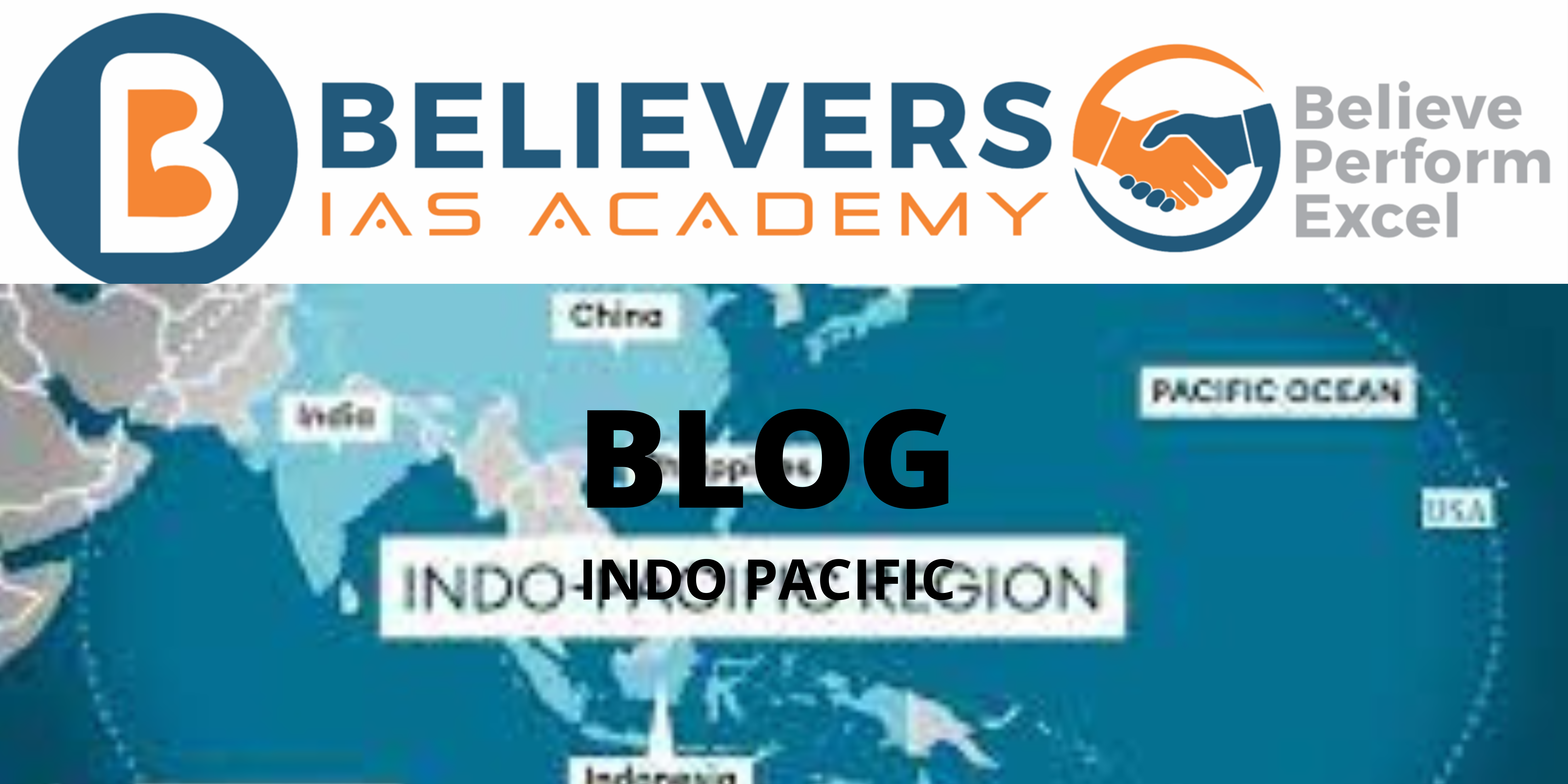INDO PACIFIC:
About:
- The Indo-Pacific concept is a recent one. Almost ten years ago, the Indo-Pacific region initially gained notoriety; since then, it has expanded tremendously.
- One of the factors influencing the term’s use is the realisation that the Indian Ocean and the Pacific are connected strategic theatres.
- Asia has also taken on the role as the gravitational centre. There are maritime routes because the Pacific and Indian oceans provide the sea lanes. The majority of world trade occurs in these waters.
Significance:
- The Indo-Pacific area, one of the world’s most populous and rich regions, includes Asia, Africa, Australia, and America.
- Given that it is home to 60% of the world’s population and 2/3 of the world’s economic production, the region’s dynamism and vitality are clear.
- The region excels at drawing in and receiving foreign direct investment. Several of the key and substantial supply networks in the world have connections to the Indo-Pacific.
- Massive amounts of marine resources, including offshore hydrocarbons, methane hydrates, seabed minerals, and rare earth metals, can be found in both the Indian and Pacific Oceans.
- Thanks to their long coasts and Exclusive Economic Zones, littoral countries have competitive capacities for exploiting these resources (EEZs).
- A few of the world’s greatest economies, including those of China, Japan, Australia, the United States, and India, are located in the Indo-Pacific region.
In what ways does India view the Indo-Pacific?
- Together, let’s create a security architecture. The US, Australia, Japan, and Indonesia are just a few of India’s close friends that want India to be present in the South and East China Seas, principally to counter China.
- India, however, wishes to cooperate in building a system for peace and stability in the area. For everyone to enjoy prosperity and security, the states must cooperate to create a shared rules-based structure for the region.
- South America to Africa: Indo-Pacific region: India sees the Indo-Pacific region as a liberated, inviting region. Every nation in the region is included, as well as anyone else who has an interest in it. India’s geographic size is determined by taking into account the area between the shores of Africa and America.
- Equitable Trade and Investment Participation: India advocates for an open, balanced, rule-based, and stable trading environment in the Indo-Pacific, which lifts all nations up on the trade and investment wave. The same thing is anticipated from the Regional Comprehensive Economic Partnership by the country (RCEP).
- Contrary to China, India favours a united rather than a divided ASEAN. By putting some ASEAN members against one another, China tries to employ the “divide and rule” conquest strategy.
- India rejects the American vision of the Indo-Pacific, which seeks to restrain Chinese dominance, and instead favours cooperation with China. Finding ways to work with China is more of an interest to India.
- In order to challenge the hegemony of one player, India aims to democratise the sector. In the past, the area resembled a lake in America almost exactly. Yet there are worries that the region may now become a Chinese lake. Any participant in the region attaining hegemonic dominance is opposed by India.
What difficulties does the Indo-Pacific region face?
- For geostrategic conflict between several multinational organisations, as QUAD and the Shanghai Cooperation Organization, the Indo-Pacific area serves as the primary theatre.
- The Indian Ocean’s stability as well as India’s interests are now in danger due to China’s military buildup. China supports its neighbours militarily and economically, especially by providing frigates for Sri Lanka, submarines for Burma, and its overseas military base in Djibouti (Horn of Africa).
- A few hundred miles from the coast of India, in Sri Lanka, China also controls the port of Hambantota.
- Non-Traditional Problems’ Hotspot: The breadth of the region makes it difficult to pinpoint and combat a number of risks, including terrorism, human trafficking, and piracy.
- Major risks to the ecological and geographical stability of the Indo-Pacific region include climate change and the three successive La Nina periods that are causing cyclones and tsunamis in that region.
- Moreover, maritime pollution and illegal, unreported, and unregulated (IUU) fishing are affecting the aquatic life in this region.
- Indian Navy’s Limited Naval Capability: The Indian Navy’s Resources and Ability to Enhance its Efforts are Restricted as a result of India’s Low Military Budget Allocation. Due to the lack of overseas military sites, India also has a serious logistical challenge in sustaining its presence in the Indo-Pacific.
How to Proceed:
- All nations in the region should be granted an equal right under international law to use common sea and airspace, which would require freedom of navigation, unrestricted commerce, and the peaceful resolution of conflicts in accordance with international law.
- On the tenets of respecting territorial integrity and sovereignty, consultation, good governance, openness, viability, and sustainability, connectivity must be developed across the region.
- The Indo-Pacific area depends on marine domain awareness for security (MDA). MDA implies effective knowledge of any maritime operation that can affect the security, safety, economy, or environment.
- Multipolarity: It is crucial that the countries in the area live in safety, peace, and legality. Moreover, this will allow for multipolarity in the region. The smaller governments in the region expect India to step up and provide them greater options, both militarily and economically. India ought to make an effort to meet their needs.




